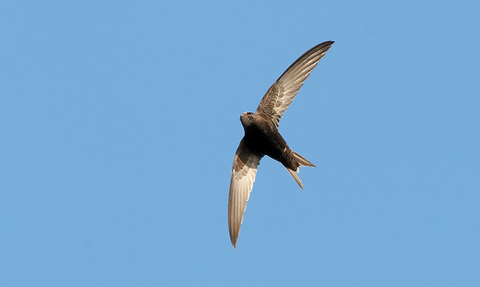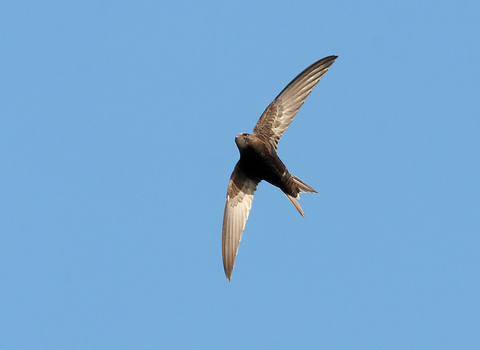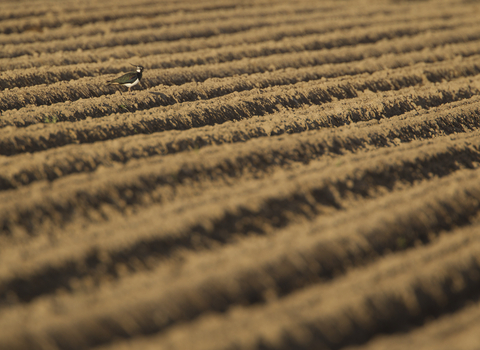If you could see like a swift, you’d see how planning and farming policies affect our landscape. You'd see what happens when hedges and meadows go, and when towns and cities grow. In Spring 2018 The Wildlife Trusts have been encouraging people to see like a swift and respond to important Government consultations on planning and farming. The consultations closed in May 2018 but there will be further opportunities for you to get involved later this year.
National farming and planning policies
The rules that guide farming and planning both have a huge impact on our wildlife. And sustainable food production and housing development rely on a healthy natural environment. The government ran two important consultations in early May. A consultation on farming closed Tuesday 8th May, and a consultation on planning closed on Thursday 10 May. There were some specific risks that need action from Government, for example Local Wildlife Sites are not mentioned in the draft planning guidance. You can find out more about our response to these consultations below.
Find out more about the Planning consultation
The Government launched a consultation to ask for views on a major overhaul of the rules that guide planning for development: the National Planning Policy Framework. Whether this is one or two houses at the end of the road, or a major 5,000 house development, these rules will shape the future of housing. It sets out the way that different kinds of development should be located, designed and built, and what infrastructure and services are needed. About 36 square miles of land are used by new developments every year, so the outcome of this consultation is hugely important for wildlife.
Key points:
- Protect wildlife and secure recognition of Local Wildlife Sites (which lose planning policy protection under the current proposals)
- Integrate wildlife habitats into new developments – to benefit wildlife and people
- Commit to an improvement for wild species and habitats from all development (‘net biodiversity gain’)
- Require that new developments contribute to a national ‘Nature Recovery Network’ by including this in local planning strategies
Find out more about the Farming consultation
The Government consultation on the future of farming 'Health and harmony: the future for food, farming and the environment in a Green Brexit' asked for views on where public money, in the form of support to farmers, will be spent in the future. It will also help to establish how the rules and standards for land management should be set and enforced.
If we are to help our wildlife to recover we need a revolution in the way that we manage our farmland. We work with thousands of farmers who care about wildlife and do their best to help on it their farms. And what works for wildlife can be good for agriculture, too. Farmers need healthy soils and huge populations of pollinators, like bees, to grow crops. We need clean, healthy water running into our rivers. We need a wildlife-rich countryside to spend time in, and feel happier and healthier as a consequence.
Key points:
- Reward farmers and land managers for the benefits they provide for society, like clean water, healthy soils and a wildlife-rich countryside
- Replace the Common Agricultural Policy with a system that supports public benefits and environmental outcomes for society
- Make it easier for farmers to help nature through changing the culture of regulation, including through better use of technology
You can read our full response to this consultation, or a summary, here
Seeing our landscape with a swifts-eye view

Swifts spend almost all of their time in the sky swooping over fields and rooftops. With their bird’s eye view, they can see how agriculture overlaps with our buildings and roads. They can see how our towns are growing. They can see when hedgerows go and fields get bigger and when beautiful woods or meadows are lost. They can see the changes happening to the landscapes we love and the improvements we can sometimes bring about, in a way that we just can’t.
If we could see like a swift, we’d see how our housing, hedges, field margins, gardens, riverbanks and road verges could be wilder and more joined-up, to give wildlife the space it needs to thrive and move around.
We all need nature. Swifts need healthy farmland full of insects to eat and houses where they can make their nests and raise their young between bricks and under our roofs. People need nature around them in the places where we live and work to improve their quality of life. Farmers need healthy soils and habitats to grow food, avoid polluting rivers and ensure pollinators like bees have the habitat they require.

©Stefan Johansson



